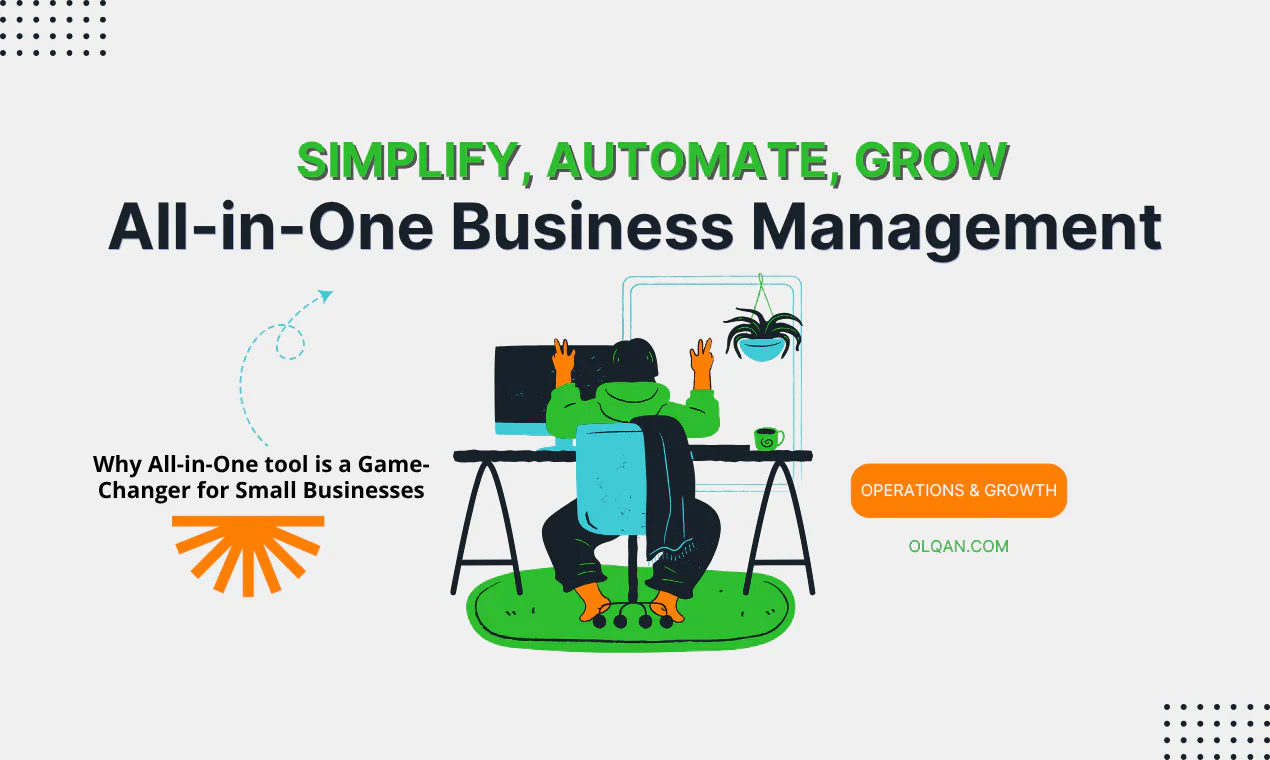The Complete Guide to Scaling Your Small Business Operations

Research shows that only 40% of small businesses successfully scale beyond their initial growth phase, and the primary reason for failure isn’t lack of demand—it’s operational breakdown.
Summary
ToggleReady to scale without chaos? Discover how Olqan’s all-in-one platform can help entrepreneurs scale their businesses efficiently. helps growing businesses build scalable operations with integrated project management, CRM, finance, and team collaboration tools.
In this guide, you’ll learn the proven framework that enables small businesses to scale successfully without losing quality or burning out your team.
Why Most Businesses Fail at Scaling
The Scaling Challenge:
- Revenue grows faster than systems can support it
- Processes that worked for 5 people break at 15 people
- Manual workarounds become major bottlenecks
- Team communication becomes fragmented
- Quality suffers as volume increases when a business grows too quickly without a solid growth strategy.
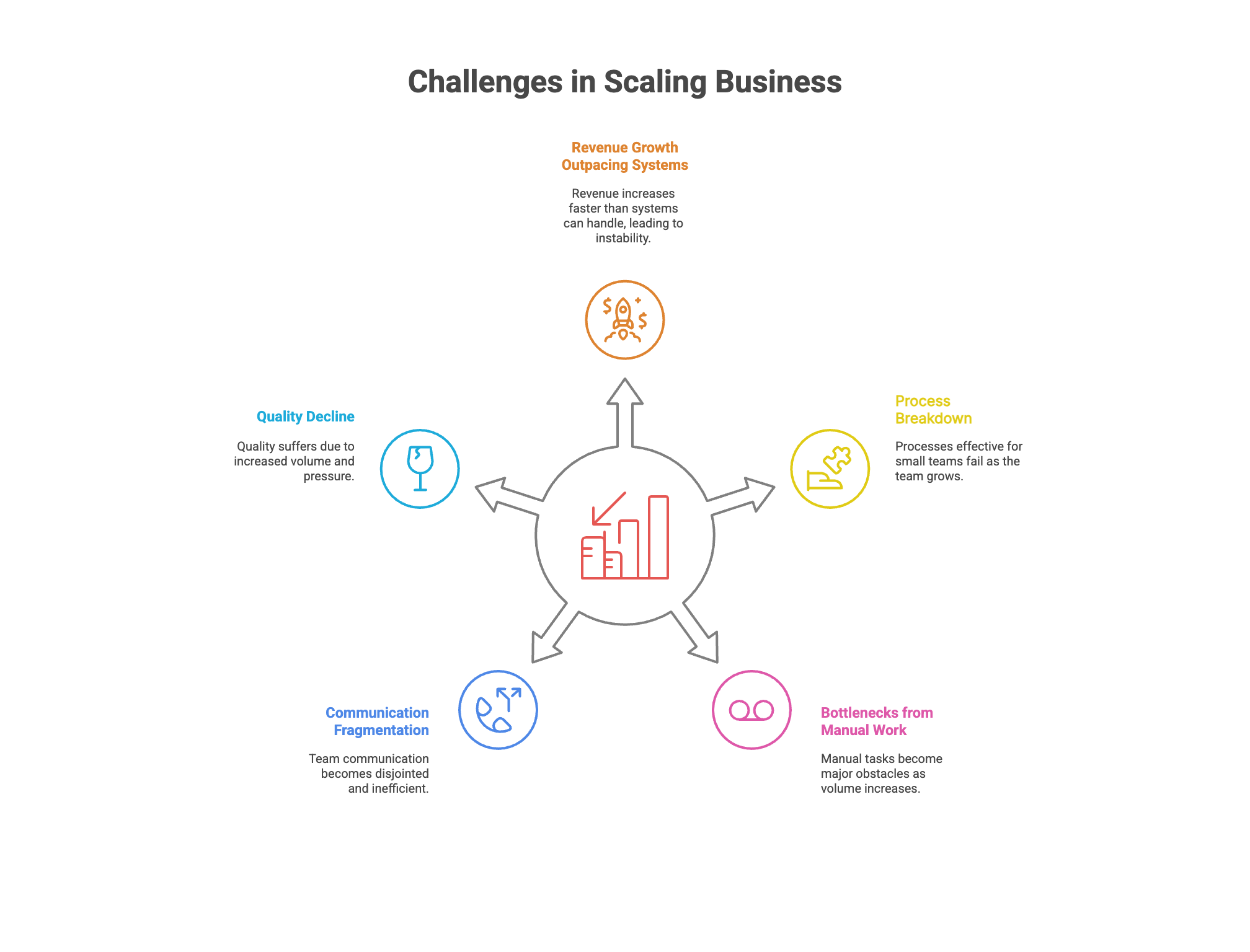
The Cost of Poor Scaling:
- 67% of scaling businesses experience significant quality drops if they lack a strategy for scaling.
- Customer satisfaction typically drops 15-30% during unmanaged scaling
- 89% report team burnout and communication breakdown during the scaling process.
But the opportunity is huge: Businesses that scale systematically see 3x faster revenue growth with maintained quality.
The 5-Pillar Scaling Framework
Pillar 1: Scalable Systems and Processes
Create processes that work without you:
- Document standard operating procedures for critical functions
- Build decision trees for common scenarios
- Implement quality checklists and validation steps
- Automate repetitive tasks and workflows to improve scalability.
Implementation Steps:
- Map your current processes and identify bottlenecks
- Document workflows with step-by-step procedures
- Identify automation opportunities
- Train team members on standardized processes
Real Example: A consulting firm scaled from 12 to 45 employees by documenting their client onboarding process. What previously took 3 weeks now takes 5 days with 80% fewer errors.
📋 Process Management: Olqan’s workflow automation helps you document, standardize, and automate business processes across all departments.
Pillar 2: Integrated Technology
Choose platforms that grow with you:
- Implement cloud-based solutions that scale automatically
- Ensure systems integrate rather than create data silos
- Focus on platforms that combine multiple functions
- Plan for future integrations and expansions
Essential Technology Categories:
- CRM: Contact management, sales pipeline, revenue forecasting
- Project Management: Task tracking, resource allocation, team collaboration
- Finance: Invoicing, expense tracking, financial reporting
- HR: Employee database, performance tracking, and payroll processing are essential for any business owner looking to streamline operations.

Pillar 3: Organizational Structure
Build structure that adapts as you grow:
- Create clear roles and responsibilities for every position
- Define decision-making authority and accountability to streamline processes within your business.
- Maintain appropriate span of control (5-8 direct reports)
- Plan succession for key positions
Scaling Organizational Stages:
- Stage 1 (1-10 employees): Founder-led with direct reporting
- Stage 2 (11-25 employees): Department formation and middle management
- Stage 3 (26-50 employees): Multi-level management structure
- Stage 4 (50+ employees): Division structure and formal governance
Pillar 4: Team Development
Build a culture that scales to support repeat business and long-term success.
- Define core values that guide hiring and decisions
- Create structured onboarding and training programs
- Implement regular feedback and performance management
- Develop career paths and advancement opportunities
Scalable Team Building: Tips for scaling your workforce effectively.
- Hire for culture and potential, not just current skills
- Implement 90-day onboarding programs with clear milestones
- Conduct weekly 1:1s and quarterly performance reviews to enhance customer experience.
- Create employee referral programs for quality candidates to enhance your product or service offerings.
👥 Team Management: Olqan’s HR management tools are designed to support business owners in their quest for operational excellence. help you build scalable teams with employee onboarding, performance tracking, and development planning.
Pillar 5: Financial Management
Maintain financial control during growth:
- Implement real-time cash flow monitoring and forecasting
- Create automated invoicing and payment processing
- Establish budget planning and variance analysis to identify growth opportunities for your business.
- Track key growth metrics and unit economics
Critical Financial Metrics:
- Revenue per employee is crucial as your customer base expands. (should maintain or improve)
- Customer acquisition cost trends
- Cash runway (months of operating expenses)
- Gross margin maintenance during scaling
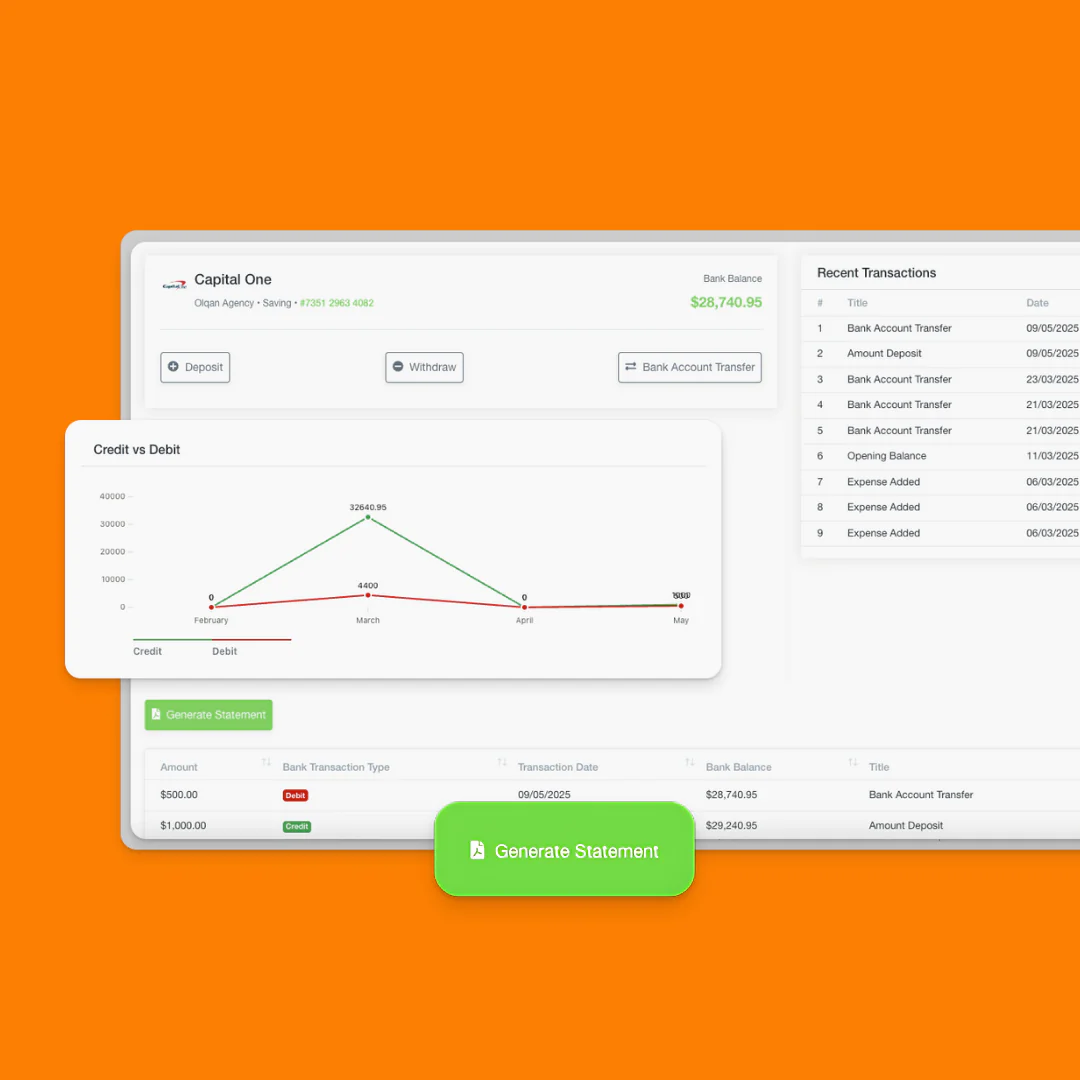
Scaling Readiness Assessment
Before scaling, assess your readiness across these dimensions:
Rate yourself 1-5 on each:
Operations (Score 1-5 each):
- Critical processes are documented and standardized
- Quality control measures are effective
- Process performance is measured and tracked
Technology (Score 1-5 each): Evaluate how these tools can help scale a business.
- Systems can handle 3x current volume
- Data flows seamlessly between functions
- Integration capabilities exist for expansion
Team (Score 1-5 each):
- Key roles have backup coverage
- Hiring processes are standardized
- Company culture is clearly defined
Finance (Score 1-5 each):
- Cash flow is positive and predictable
- Financial reporting is accurate and timely
- Unit economics are positive and improving
Scoring:
- 60+ points: Ready to scale
- 45-59 points: Address gaps first
- Below 45 points: Focus on foundation building
Your 90-Day Scaling Action Plan
Month 1: Foundation Building
Week 1-2: Assessment and Quick Wins
- Complete a scaling readiness assessment to ensure your business model can handle rapid growth.
- Document top 3 critical processes
- Implement basic automation for repetitive tasks
- Establish key performance metrics tracking
Week 3-4: System Setup
- Research and select core technology platforms
- Begin implementing an integrated CRM and project management system to support your business plan.
- Create communication standards and meeting rhythms
- Train team on new tools and procedures
Month 2: Process Optimization
- Analyze workflow bottlenecks and optimize
- Implement automation for identified opportunities
- Create standard operating procedures
- Establish quality control and performance monitoring
Month 3: Team and Culture Development
- Implement formal hiring and onboarding processes
- Create performance management systems that support scalability.
- Define and communicate company values
- Establish career development paths
🚀 Scaling Made Simple: Olqan’s integrated platform provides all the tools you need—CRM, project management, HR, and finance—in one system that grows with your business.
Common Scaling Mistakes to Avoid
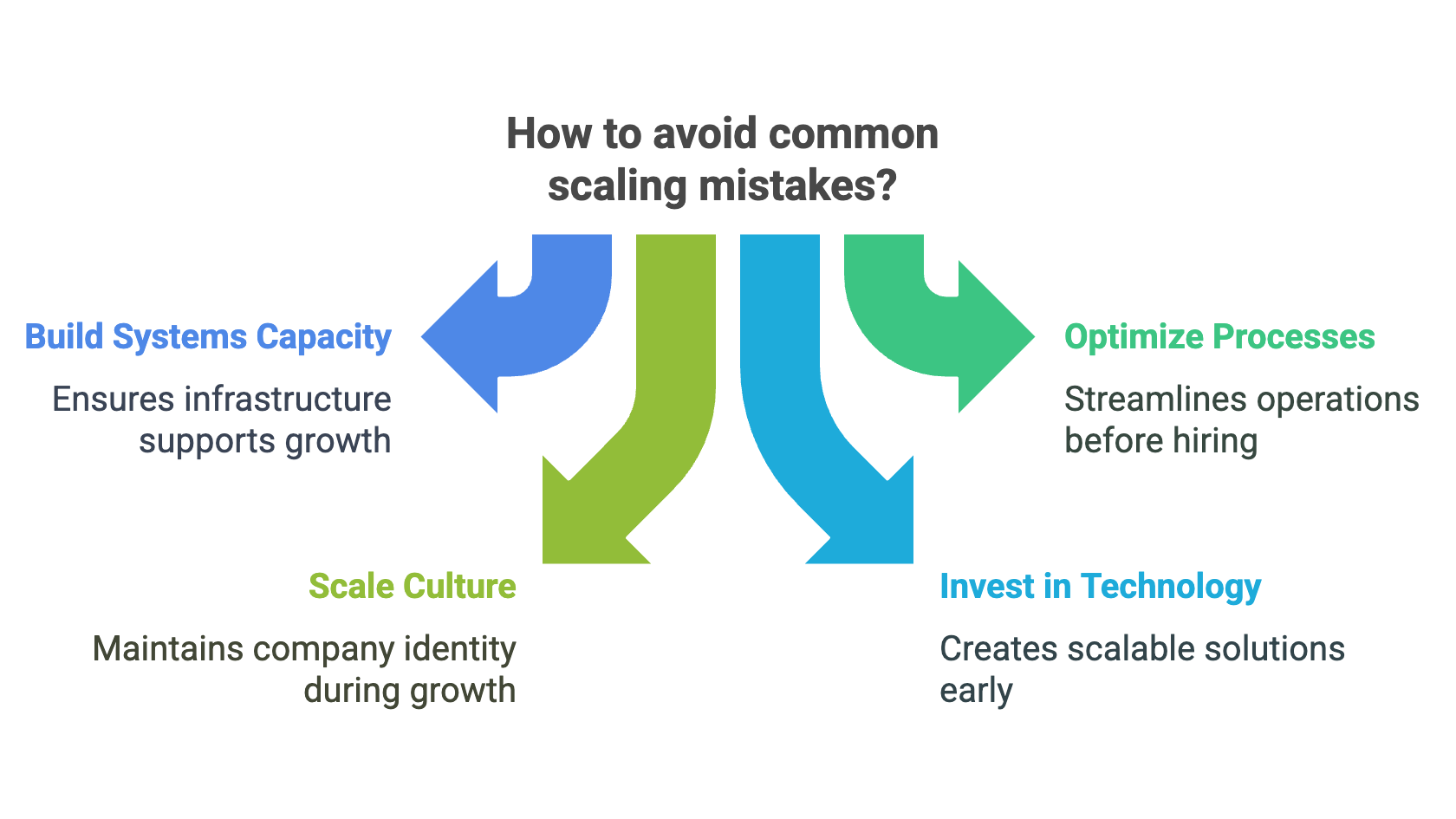
1. Scaling Too Fast Without Foundation
Mistake: Failing to scale a business effectively can lead to missed growth opportunities. Growing revenue without building supporting systems Solution: Build systems capacity ahead of demand
2. Hiring Too Many People Too Quickly
Mistake: Solving problems by throwing people at them Solution: Optimize processes first, then add people strategically
3. Ignoring Company Culture
Mistake: Focusing only on systems while ignoring culture can hinder your ability to scale a business effectively. Solution: Intentionally scale culture alongside operations
4. Technology Debt Accumulation
Mistake: Patching systems instead of building scalable solutions Solution: Invest in scalable technology architecture early
Success Stories: Scaling Done Right
SaaS Company: 5x Revenue Growth
Challenge: Struggling to scale beyond $2M ARR due to operational chaos
Solution: Implemented 5-pillar scaling framework
- Documented processes and automated workflows
- Migrated to integrated platform
- Created management structure and performance systems
- Added real-time financial reporting
Results:
- Scaled from $2M to $10M ARR in 18 months
- Increased gross margins from 68% to 78%
- Improved customer satisfaction from 3.2 to 4.7/5
- Achieved 95% employee retention during growth
Professional Services: Tripled Team Size
Challenge: Growing from 15 to 45 consultants while maintaining quality
Solution: Built scalable delivery processes
- Standardized service methodologies
- Implemented resource management systems
- Created knowledge sharing platforms
- Built client success tracking
Results:
- Grew from 15 to 45 consultants in 2 years
- Increased project margins from 22% to 31%
- Improved client satisfaction by 40%
- Achieved 88% consultant utilization rates
🏆 More Success Stories: Learn how other entrepreneurs have successfully scaled their businesses. Learn how businesses have successfully scaled with Olqan’s comprehensive platform.
Key Scaling Metrics to Track
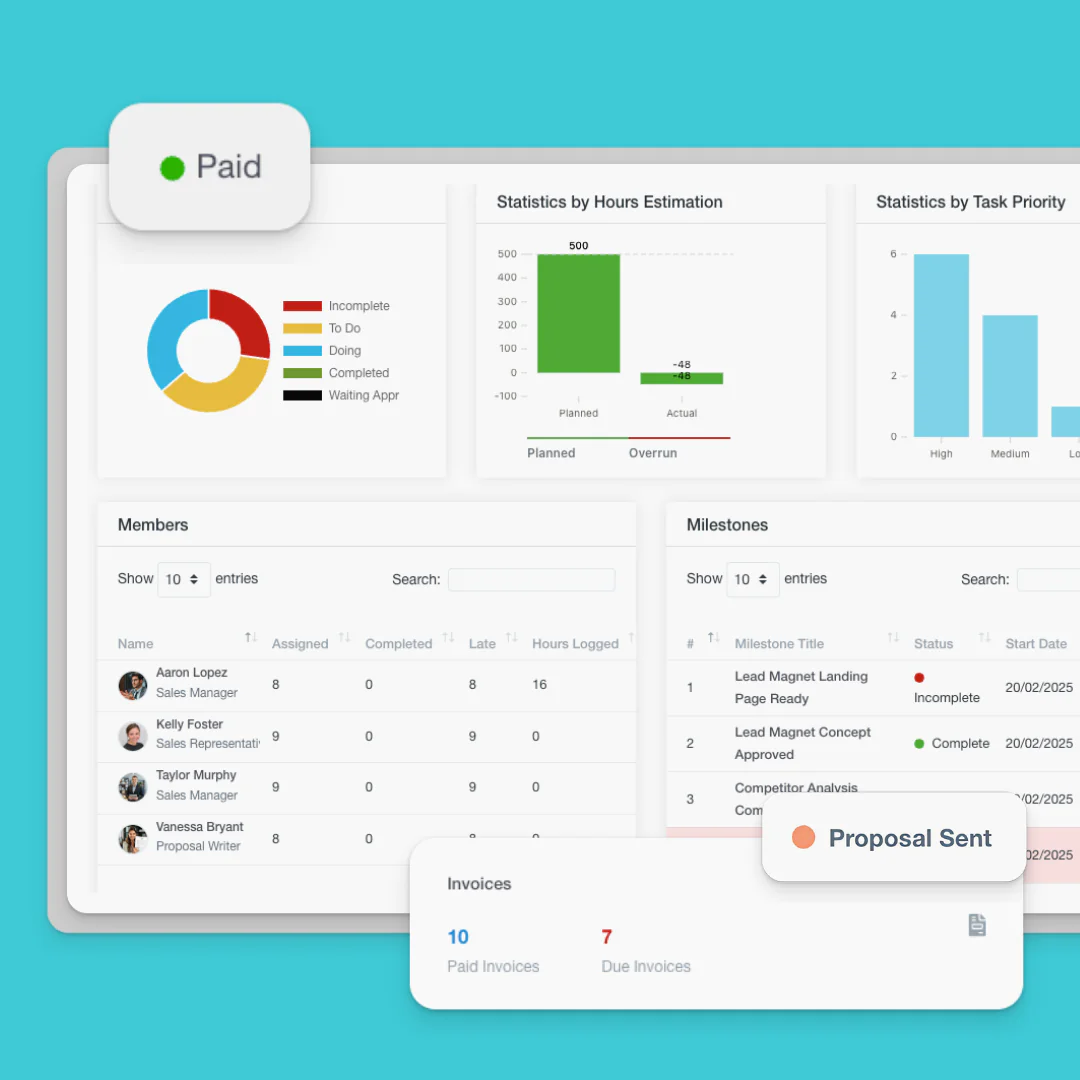
Operational Efficiency:
- Revenue per employee
- Process cycle times
- Error rates and rework
- Customer satisfaction scores
Growth Health:
- Customer acquisition cost trends
- Customer lifetime value
- Revenue predictability
- Employee retention rates
Financial Health:
- Gross margin stability
- Operating leverage
- Cash conversion cycle
- Working capital efficiency
Conclusion: Scale Smart, Not Just Fast
Successful scaling isn’t about growing as fast as possible—it’s about building operational capabilities that can handle growth sustainably.
Key Principles for Scaling Success:
- Build systems before you need them
- Invest in integrated technology that scales
- Develop people and culture intentionally
- Manage finances proactively
- Measure performance continuously
The businesses that thrive during scaling invest in foundation building, systematic processes, and the right technology infrastructure. They understand that sustainable growth comes from operational excellence and a solid business plan, not just revenue acceleration.
🚀 Ready to scale your business operations systematically to meet increased demand? Discover how Olqan’s all-in-one platform provides everything you need to scale successfully—integrated CRM, project management, finance, HR, and analytics designed specifically for growing businesses.
Schedule a Scaling Demo | Join Olqan



